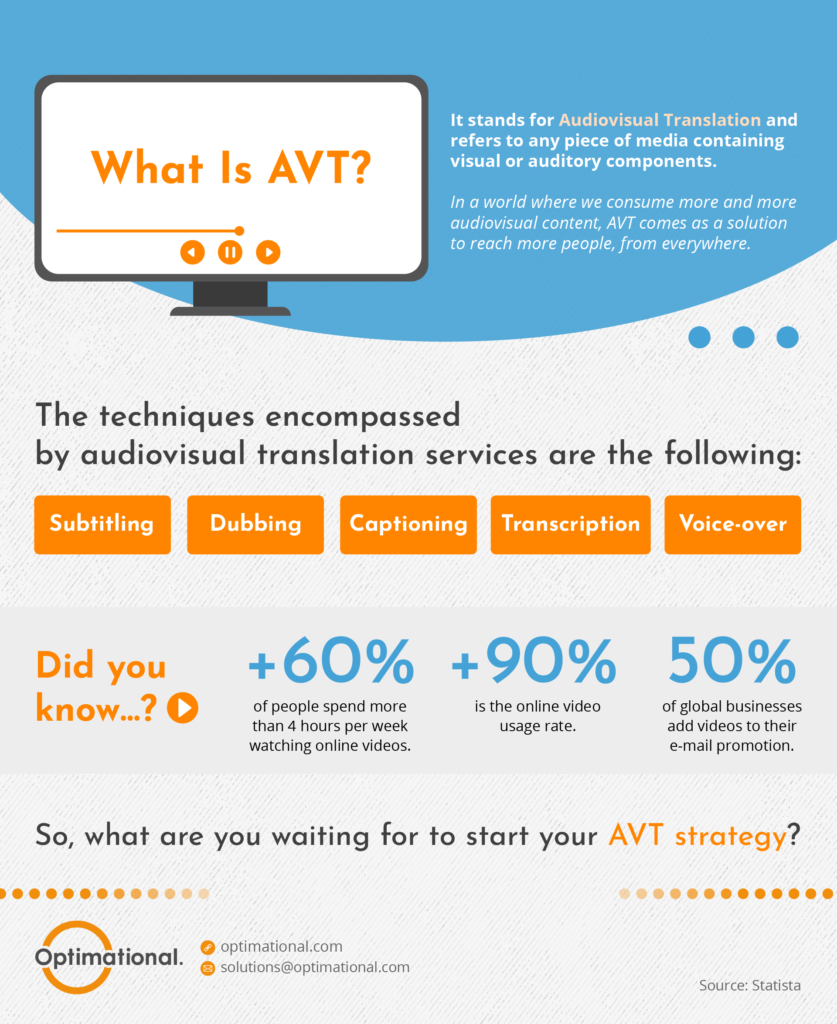What Is AVT? – An Infographic on Audiovisual Translation Services
Audiovisual content is more popular than ever, and the number of professionals and brands that leverage its power to enhance their social media visibility or enrich their websites by diversifying their content strategies is constantly rising. From valuable training materials to product tutorials and beyond, videos paved their way and have adapted to serve different purposes. Yet, for these videos to thrive and draw the desired attention, relying on audiovisual translation services is a must.
Here are some interesting insights on the topic that you can’t miss.

Incorporating AVT is not just about expanding reach; it’s about cultivating authenticity. When brands choose to include dubbing or subtitling in their content strategies, they demonstrate their commitment towards adapting messages for specific regions, creating a personal experience that resonates with audiences on a deeper level. This action not only improves user experience but also builds stronger relations, as viewers value brands’ efforts to bridge linguistic and cultural gaps.
As you see, the advantages of audiovisual translation make it worthwhile, but other aspects should be taken into consideration before investing our efforts in AVT. We’ve gathered some of the pros and cons of AVT to get you started:
Pros:
1. Global expansion: AVT allows content to transcend language barriers, reaching a wider international audience and opening up new avenues for engagement.
2. Cultural connection: Translating and localizing audiovisual material creates a deeper and more authentic bond between brands and viewers since it addresses cultural nuances.
3. Accessibility: Most AVT techniques, like subtitling and captioning, make videos accessible to people with hearing impairments, allowing them to enjoy content they might not be able to consume without these accessibility features.
Cons:
1. Cost and Time: Implementing high-quality AVT methods like dubbing or subtitling can imply a significant investment of resources.
2. Visual Distraction: Subtitles sometimes cover important visual elements, potentially distracting viewers from the on-screen action.
3. Language Limitations: Some linguistic nuances and wordplay may be lost in translation, especially when adapting content for different cultures.
Now that you know the basics about audiovisual translation services, don’t miss out on these insightful blogs to learn more:
- The Beginner’s Guide to Business Transcription
- What is the Difference Between Subtitles and Captions?
Are you ready to make your audiovisual content go global? Let’s make it happen! Contact us today: At Optimational, we have the tools and strategies to make your content cross linguistic and cultural boundaries with impact and authenticity.


